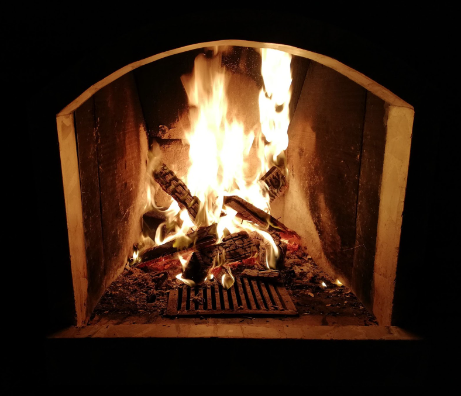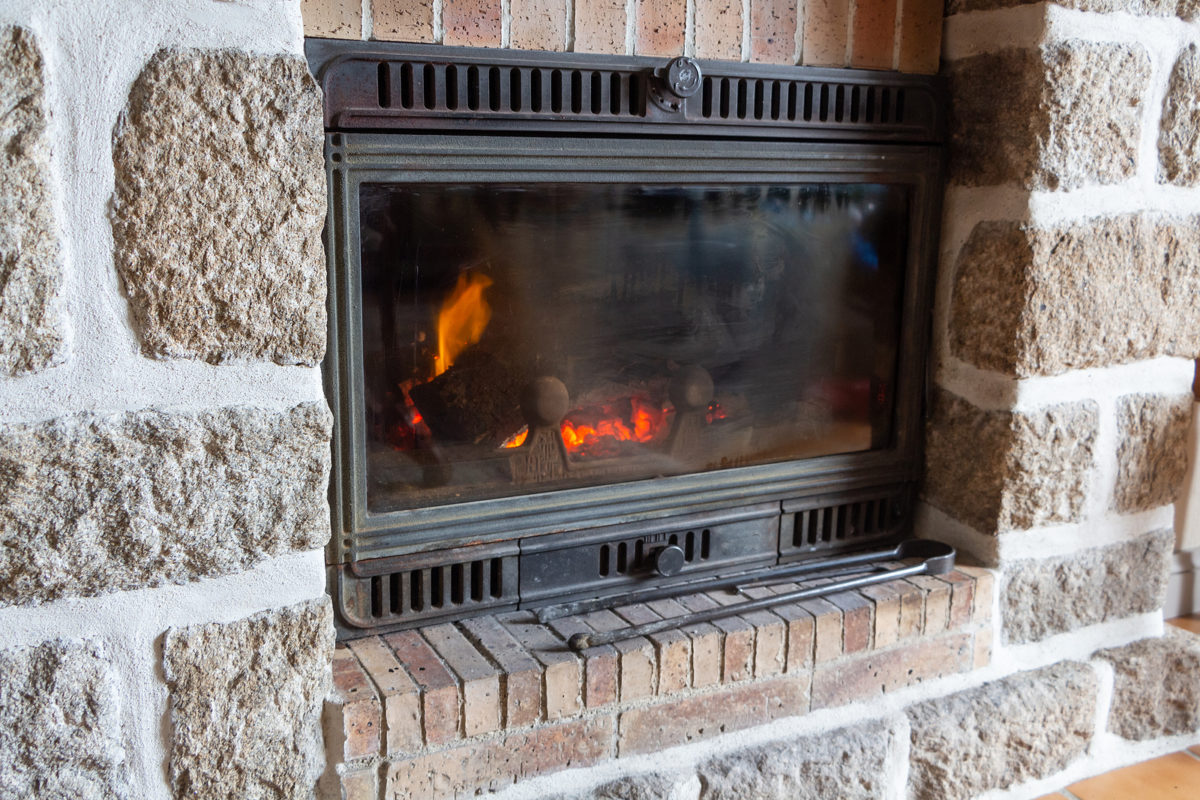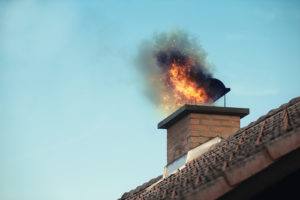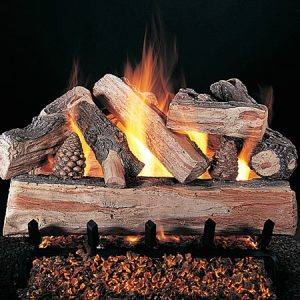What is the best wood to burn in a fireplace?
Burning wood in a fireplace is an enjoyable and cozy experience, especially during the holidays. However, some wood is better to burn than others, and for a good reason.
To ensure safety, as well as the safety of family and neighbors, it’s important to familiarize oneself with what types of wood are best for burning in the Bay Area.
The density and moisture of wood all play a role in how hot and how long it will burn. The best woods will burn efficiently, leaving the fireplace or stove clean. On the other hand, some types of wood barely burn at all and just fill the home with smoke instead.
Hardwood V.S. Softwood: What’s the Difference?
Some people think hardwood is stronger than softwood because of its name, but this isn’t always the case. In fact, some types of softwoods are actually harder than hardwoods. So what’s the difference between these two kinds of wood, and which is the best for burning?
What is Hardwood?
The easiest way to identify hardwood trees is to look at their leaves. Hardwood trees typically have deciduous (broad) leaves and are usually found in temperate climates. Examples of hardwoods that are good for burning in the fireplace include oak, hickory, maple, poplar, and ash.
Hardwood burns hotter and longer than softwood because it has a higher density. It also produces less smoke, making it a good choice for those living in urban areas.
What is Softwood?
Softwoods typically have evergreen (needle-like) leaves and are often found in colder climates. Examples of softwoods suitable for burning in the fireplace include pine, cedar, spruce, and fir. Softwoods have a lower density than hardwoods, so they burn faster and produce more smoke.
Additionally, they tend to have higher sap levels and more air within their cell structure, which results in a hot, fast burn with a lot of sparks. It is generally not recommended to burn softwood for cooking because the sap can affect the flavor of food.
The Verdict: Hardwood is Better For Burning
Overall, hardwood is the best type of wood to burn in the fireplace and should be used whenever possible. It has a longer burn time than softwood and produces significantly less smoke.
Seasoned Wood is Best
Wood should be seasoned before burning it in the fireplace. Seasoning wood means that it has been allowed to dry out, usually over a period of six months to a year.
Wood that has been recently cut, or unseasoned wood, contains a lot of water – around half its weight. Burning this type of wood to burn can be tricky as it produces more smoke than dry wood and doesn’t burn as well. Seasoned wood has been split, stacked, and stored in a dry area to allow it to dry completely.
Unseasoned or “wet” wood will not burn as efficiently or cleanly and can cause creosote buildup in a chimney, creating a fire hazard. Therefore, when choosing wood to burn, go for seasoned hardwood!
Where to Find Best Wood to Burn in the Bay Area
When buying wood to burn, there are several factors to keep in mind: what type of wood to burn, what size, and what quality. The best wood for burning in the Bay Area is dry, seasoned hardwood.
It should have been cut and split for at least six months to a year and should have an average moisture content of 15-20%. Seasoned wood is dry to the touch, may have loose bark and splits or cracks in ends, and should feel lightweight for its size.
Firewood can be purchased from local vendors, hardware stores, or online. It is essential to check the quality and ensure it will burn properly.
Firewood is most commonly sold in units of a pallet, cord, face-cord, or bundle.
A full cord of firewood is a stack of wood that is 8 feet long, 4 feet deep, and 4 feet high. Most standard fireplaces, wood stoves, or fire pits will require further cutting, so the logs fit them.
A face cord is a wood pile that measures 8 feet long and 4 feet high, and typically uses 16-inch logs–amounting to 64 cubic feet of wood. It is 1/3rd the size of a full cord.
Firewood bundles are one of the most convenient ways to purchase and use firewood. Most bundles are .75 cubic feet, making them easy to carry and handle. Some campgrounds even sell bundles to visitors. Because of its convenience, bundled firewood is often at the higher end of the price range.
If purchasing wood wrapped in plastic, check whether it is dry before bringing it home. If the wood still feels wet, place it on a firewood rack in a sheltered area so it can continue to dry. It’s best to avoid leaning or stacking firewood against a home – this provides a very cozy place for critters to hide.
Safe Burning Rules
1. Check for Alerts Before Burning
Most of the time, it is perfectly safe to burn seasoned wood throughout the seasons. However, when there are high levels of fine particulate pollution in the air, the county may call for a Spare the Air alert. On these days, the no-burn rule applies to both homes and businesses like hotels and restaurants.
Signing up for text alerts about Spare the Air is easy. Alerts are also posted to the Spare the Air and Air District websites and social media pages (Facebook, Twitter, and Instagram). Local radio and TV news media also broadcast the alerts.
2. Only Burn Dry, Seasoned Wood
Burning wet or unseasoned wood is not only inefficient, but it also increases the amount of smoke that is released into the air. Burning moist wood produces more soot, which can lead to chimney and air pollution problems.
Furthermore, burning wet wood can cause wood fires to produce more creosote as a result of incomplete combustion. Creosote smells like tar and builds up over time, eventually lining the chimney or flue.
This substance poses a significant chimney fire risk as it is highly flammable. Some studies have even indicated that creosote is a probable carcinogen.
3. Use an EPA-Certified Wood Burning Device
Fireplaces or stoves must meet EPA standards for certified wood-burning devices. These appliances are more efficient and produce less smoke than uncertified devices, so they are much better for the environment and general health.
New EPA-certified stoves produce no more than 4.5 grams per hour – older and uncertified stoves release 15 to 30 grams of smoke per hour.
4. Never Burn Garbage, Plastics, or Other Harmful Materials
Unfortunately, there’s a lot of misinformation out there about what is safe to burn. Burning garbage, plastics, or other materials not meant for burning can release hazardous chemicals into the air and pose a health risk.
Here are some more examples of materials that are NOT safe to burn:
- Gift wrapping paper
- Cardboard
- Painted or treated lumber
- Paper with colored print, including newspapers
- Fire accelerants or firestarters
- Dryer lint
- Driftwood
The best fuel for a fireplace is the fuel it was built for. Other fuels may release toxic fumes, burn too hot for the chimney, cause resin buildup, and cause a risk of chimney fires.
5. Avoid Burning Eucalyptus
Eucalyptus wood is readily available in the Bay Area; these trees are invasive and are constantly being cut down. Although they are hard as stone and take years to dry even when cut and split, they are a pyrophyte, just like pine and cedar.
When they catch fire, the sap in them gets hot, boils, and then explodes. Eucalyptus trees were the fuel for the 1991 Oakland Hills fire that destroyed 3,000 homes.
Related Reading: What Is Stage 3 Creosote and How Do You Deal With It?
Burning the correct type of wood to burn and following safe burning practices can help keep our air clean and make for a safer, healthier environment.
With any questions about what is safe to burn in a fireplace or stove, contact our local chimney sweeps at The Irish Sweep for more information.
Enjoy a cozy, crackling, and safe fire this holiday season!





